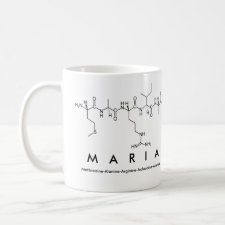
Authors: Uzuriaga-Sánchez RJ, Wong A, Khan S, Pividori MI, Picasso G, Sotomayor MDPT
Article Title: Synthesis of a new magnetic-MIP for the selective detection of 1-chloro-2,4-dinitrobenzene, a highly allergenic compound.
Publication date: 2017
Journal: Materials Science and Engineering: C
Volume: 74
Page numbers: 365-373.
DOI: 10.1016/j.msec.2016.12.019
Alternative URL: http://www.sciencedirect.com/science/article/pii/S092849311631459X
Abstract: Molecularly imprinted polymers (MIPs) in combination with magnetic nanoparticles, in a core@shell format, were studied for selective detection of 1-chloro-2,4-dinitrobenzene (CDNB), a powerful allergenic substance. Magnetic nanoparticles were prepared by the co-precipitation method and mixed with oleic acid (OA). This material was then encapsulated in three types of hydrophobic polymeric matrix, poly-(MA-co-EDGMA), poly-(AA-co-EDGMA), and poly-(1-VN-co-EDGMA), by the mini-emulsion method. These matrices were used due to their ability to interact specifically with the functional groups of the analyte. Finally, the MIP-CDNB was obtained on the magnetic-hydrophobic surfaces using precipitation polymerization in the presence of the analyte. XRD diffraction patterns suggested the presence of magnetite in the composite and SEM analysis revealed a nanoparticle size between 10 and 18 nm. Under the optimized adsorption conditions, the magnetic-MIP material showed a higher adsorption capacity (5.1 mg g-1) than its non-magnetic counterpart (4.2 mg g-1). In tests of the selectivity of the magnetic-MIP towards CDNB, α-values of 2.5 and 10.4, respectively, were obtained for dichlorophenol and o-nitrophenol, two structurally similar compounds, and no adsorption was observed for any other non-analogous analyte. The magnetic-MIP and magnetic-NIP were applied using water enriched with 0.5 mg L-1 of CDNB, achieving recovery values of 83.8 ( ± 0.8)% and 66 ( ± 1)%, respectively, revealing the suitability of the material for detection of CDNB
Template and target information: 1-chloro-2,4-dinitrobenzene, CDNB
Author keywords: Biomimetic polymers, plastic antibodies, Magnetic-MIP, 1-Chloro-2,4-dinitrobenzene, Environmental control, Allergenic substances



Join the Society for Molecular Imprinting

New items RSS feed
Sign-up for e-mail updates:
Choose between receiving an occasional newsletter or more frequent e-mail alerts.
Click here to go to the sign-up page.
Is your name elemental or peptidic? Enter your name and find out by clicking either of the buttons below!
Other products you may like:
 MIPdatabase
MIPdatabase









